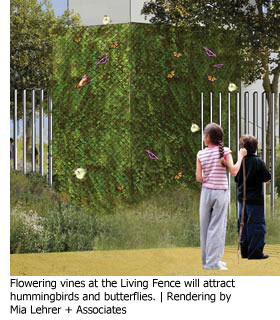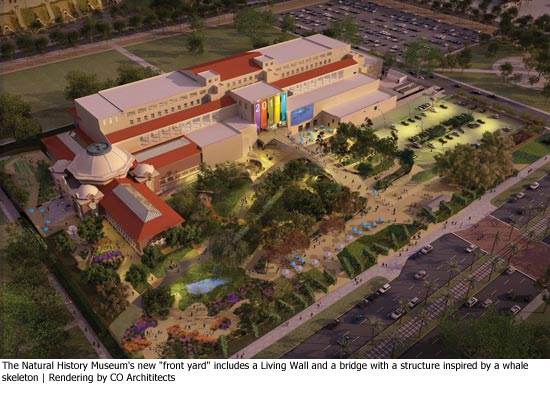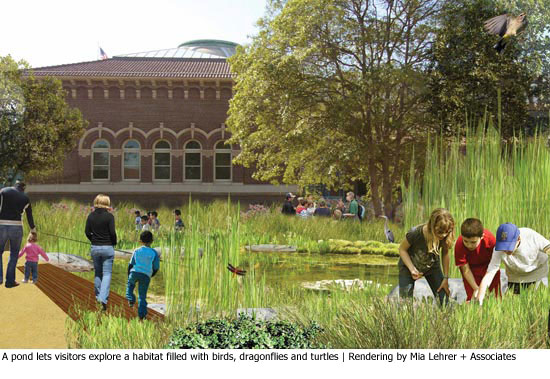New outside digs at museum
April 22, 2010
The Natural History Museum is, in its words, getting “a new front yard”—3.5 acres of open-air habitats and exhibits designed to attract local wildlife and connect visitors with Southern California’s unique outdoor experiences.
“We saw a chance to put nature back in natural history,” museum president and director Dr. Jane Pisano said during a media event to announce the ambitious $30-million project, scheduled to open in the Summer of 2011.
Tentatively called “North Campus,” the outdoor area will increase the museum’s exhibit space by 50% through the creation of 11 “wilderness” areas with such names as Pollinator Garden, Living Wall, Urban Edge, Shadow Garden and Get Dirty Zone.
The goal is to replicate a series of distinct natural environments that draw birds, butterflies, lizards and other wildlife while becoming educational laboratories for visitors of all ages. (For a detailed list of North Campus features, click here).
“We can teach people lessons they can easily take to their backyards or schoolyards,” Pisano said in an interview following the media presentation.
In addition to the outdoor exhibits, a 140-foot bridge—inspired by a whale skeleton exhibited inside the facility—will span overhead, allowing visitors to walk from the street directly to the entrance of the county-run museum off Exposition Boulevard. A stop will also be built in front of the museum for the new light-rail Expo Line, which is now under construction.
Funding for the project includes $10 million from L.A. County to build a two-story garage that will free up more space for the habitats.
North Campus is the latest piece of the Natural History Museum’s ongoing rebuilding and transformation project leading up to its 2013 Centennial. Called “NHM Next,” the initiative started with the dramatic restoration of the museum’s 1913 building, completed last year.
The Beaux Arts building was the first dedicated museum in L.A., so its restoration included a state of the art seismic retrofit to strengthen the un-reinforced brick walls.
Construction crews also restored the building’s iconic dome, covered with a stunning display of more than a million yellow and green ceramic tiles. Meanwhile, artists recreated the building’s gargoyles and topped the east wing with a new 6-foot eagle to replace the original bird destroyed in a 1920s earthquake. The grandson of the creator of a stained-glass skylight oversaw the restoration of the multi-hued piece.
In July, the building’s first new permanent exhibit is set to open, a ground-breaking look at 65-million years of the “Age of Mammals,” the first permanent exhibit to link geology and climate change over the entire sweep of mammalian history.
Scheduled to open in 2011 will be “Dinosaur Mysteries: Past & Present,” a mega-exhibit exploring how dinosaurs lived and why they died. The stars of that show will be the world’s only grouping of a baby, child and adult T. rex.
Come December, 2012, just before the museum’s centennial celebration, a third major exhibit will debut—“Under the Sun: Los Angeles, California and the World.” It will chart local cultural and natural history with hundreds of artifacts and artworks.
While waiting for the new exhibits, museum goers have had plenty of offerings in the museum’s 1920s buildings that have remained open, including the beloved dioramas of wild animal habitats of Africa and North America, and a “Thomas the T. rex” exhibit showing the young adult dinosaur excavated recently in Montana. To plan a visit, check out the museum’s updated website.
















 405 bridge work causes a stink
405 bridge work causes a stink